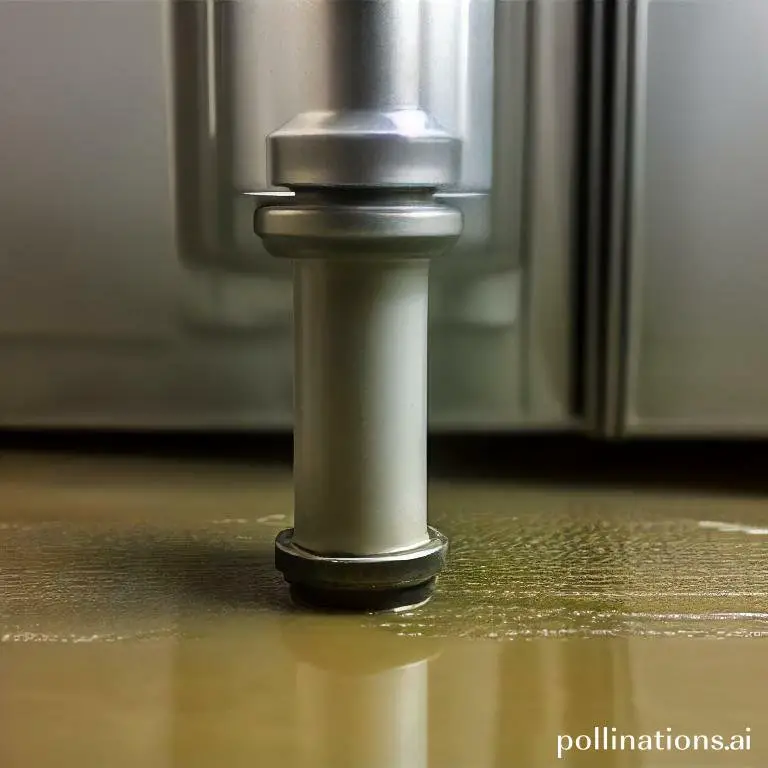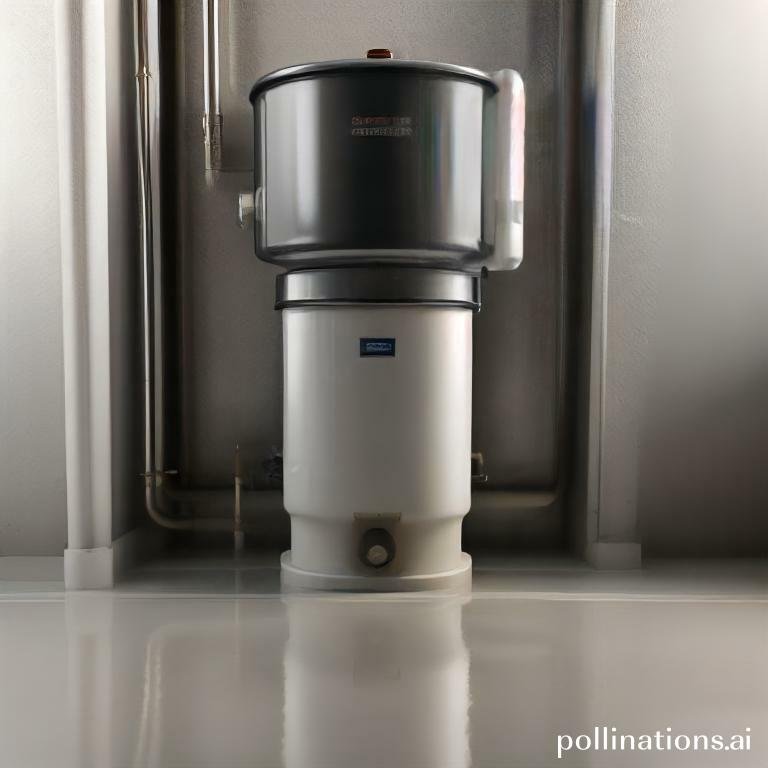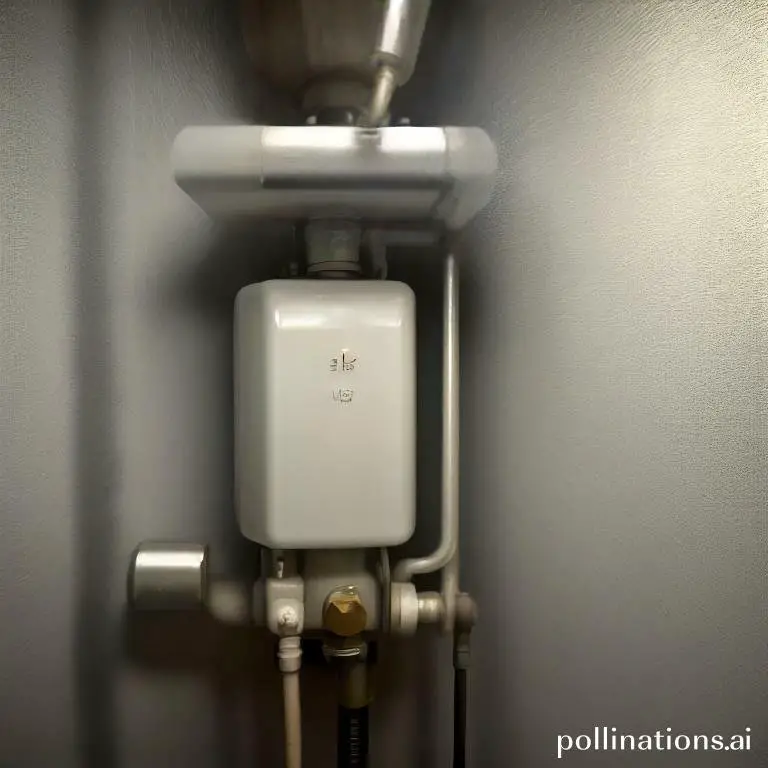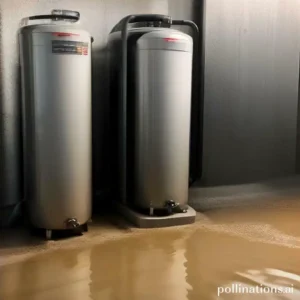
II. Regular maintenance, including flushing the system and cleaning the flow sensor, can help prevent sediment buildup and ensure proper functioning of the tankless water heater.
III. It is important to follow manufacturer guidelines for maintenance and cleaning, as well as to use proper filtration systems and water softeners to minimize sediment accumulation.
Sediment buildup can significantly impact the performance of tankless water heaters, specifically affecting the flow sensor. As water flows through the system, sediment particles can accumulate and clog the sensor, leading to reduced water flow and potential damage to the heater.
Regular maintenance and cleaning are crucial to ensure optimal functionality and prevent any disruptions in hot water supply. Grasping the impact of sediment on tankless water heaters and taking proactive measures can help maintain a reliable and efficient water heating system.
Discerning Tankless Water Heater Flow Sensors
In this section, we will venture into the concept of flow sensors and their significance in tankless water heaters.
1. What is a flow sensor?
A flow sensor is a crucial component in a tankless water heater that measures the rate of water flow through the system. It ensures that the heater only activates when there is a demand for hot water, thus conserving energy and improving efficiency.
Flow sensors are typically equipped with a turbine or paddle wheel that rotates as water flows through it. This rotation generates an electrical signal, which is then used by the heater to determine when to heat the water.
2. How does a flow sensor work in a tankless water heater?
When a hot water tap is turned on, water enters the tankless water heater and flows through the flow sensor. As the water moves, the turbine or paddle wheel spins, generating an electrical signal proportional to the flow rate.
This signal is sent to the heater’s control board, which then activates the heating element or gas burner to warm the water to the desired temperature. Once the tap is turned off and the flow stops, the flow sensor signals the heater to shut down, saving energy and reducing standby heat loss.
3. Importance of flow sensors in maintaining optimal performance of tankless water heaters
Flow sensors play a vital role in ensuring the optimal performance of tankless water heaters. By accurately measuring the flow rate, they prevent the heater from operating when there is no demand for hot water, reducing energy consumption and prolonging the lifespan of the unit.
Additionally, flow sensors help prevent damage to the heater by detecting low flow rates, which could indicate a potential blockage or malfunction. This early detection allows for timely maintenance or repairs, preventing costly breakdowns and ensuring uninterrupted hot water supply.
| Flow Sensor Benefits | Flow Sensor Applications |
|---|---|
| Energy saving: Flow sensors ensure the heater only operates when hot water is needed, reducing energy consumption. | Residential use: Tankless water heaters equipped with flow sensors are commonly used in homes to provide on-demand hot water. |
| Extended lifespan: By preventing unnecessary heating cycles, flow sensors help prolong the lifespan of tankless water heaters. | Commercial use: Flow sensors are also utilized in commercial settings such as hotels, restaurants, and offices to meet high hot water demand. |
| Early malfunction detection: Flow sensors can detect low flow rates, indicating potential blockages or malfunctions in the system. | Industrial use: Industries that require hot water for various processes rely on tankless water heaters with flow sensors for efficient operation. |
Sediment Buildup in Tankless Water Heaters
Tankless water heaters are a popular choice for many homeowners due to their efficiency and compact size. In contrast, over time, sediment buildup can occur, leading to various issues. In this section, we will probe the causes of sediment buildup in tankless water heaters, signs to look out for, and the negative effects it can have on the flow sensor.
1. What causes sediment buildup in tankless water heaters?
Sediment buildup in tankless water heaters is primarily caused by minerals and impurities present in the water supply. These minerals, such as calcium and magnesium, can accumulate over time and form a layer of sediment inside the heater. Additionally, factors like hard water, high water pressure, and inadequate maintenance can contribute to sediment buildup.
2. Signs of sediment buildup in tankless water heaters
It is essential to recognize the signs of sediment buildup in tankless water heaters to address the issue promptly. Some common signs include reduced water flow, fluctuating water temperature, strange noises coming from the heater, and an increase in energy consumption. If you notice any of these signs, it is advisable to take action to prevent further damage to the heater.
3. Negative effects of sediment buildup on tankless water heater flow sensor
The flow sensor in a tankless water heater plays a crucial role in regulating water flow and ensuring efficient operation. Albeit, sediment buildup can negatively impact its performance. The layer of sediment can restrict the flow of water, leading to decreased water pressure and inconsistent hot water supply. Additionally, sediment buildup can cause the flow sensor to malfunction, resulting in frequent error codes and potential system failures.
How to Prevent Sediment Buildup in Tankless Water Heaters
Sediment buildup in tankless water heaters can lead to decreased efficiency and potential damage to the unit. By observing these preventive measures, you can ensure the longevity and optimal performance of your tankless water heater.
1. Regular maintenance of tankless water heaters
Regular maintenance is crucial in preventing sediment buildup in tankless water heaters. It is recommended to schedule professional maintenance at least once a year. During this maintenance, the technician will inspect the unit, clean any accumulated sediment, and ensure all components are in good working condition.
2. Installation of water softeners and filters
Water softeners and filters are effective tools in preventing sediment buildup. Hard water contains minerals that can leave deposits in the tankless water heater over time. By installing a water softener, you can reduce the mineral content in the water and minimize sediment accumulation. Additionally, using a filter can help remove any impurities or debris that may contribute to sediment buildup.
3. Flushing the tankless water heater regularly
Regularly flushing the tankless water heater is essential in preventing sediment buildup. Flushing removes any accumulated sediment and maintains the efficiency of the unit. To flush the water heater, follow the manufacturer’s instructions or consult a professional. Flushing frequency may vary depending on water quality and usage, but it is generally recommended to flush the system at least once a year.

How to Clean Tankless Water Heater Flow Sensors
1. Importance of cleaning tankless water heater flow sensors
Tankless water heaters are a popular choice for many homeowners due to their energy efficiency and continuous hot water supply. That being said, like any other appliance, they require regular maintenance to ensure optimal performance. One crucial aspect of maintenance is cleaning the flow sensors.
The flow sensors in a tankless water heater are responsible for detecting the flow of water and controlling the heating process. Over time, these sensors can accumulate mineral deposits and debris, leading to inaccurate readings and reduced efficiency. Cleaning the flow sensors can help restore their functionality and improve the overall performance of the water heater.
2. Steps to clean tankless water heater flow sensors
Here are the steps to effectively clean the flow sensors of your tankless water heater:
- Turn off the power: Before starting any maintenance procedure, ensure that the power to the water heater is turned off. This will prevent any potential electrical hazards.
- Locate the flow sensors: The flow sensors are typically located near the water inlet and outlet pipes of the tankless water heater. Consult the manufacturer’s manual for specific instructions.
- Disconnect the sensors: Carefully disconnect the flow sensors from the water heater, following the manufacturer’s guidelines. Take note of the wiring connections to ensure proper reinstallation.
- Clean the sensors: Using a soft brush or cloth, gently remove any visible debris or mineral deposits from the sensors. Avoid using abrasive materials that can damage the sensors.
- Flush the sensors: Use a mixture of vinegar and water to flush the sensors thoroughly. This will help dissolve any stubborn mineral deposits. Let the sensors soak in the solution for a few minutes before rinsing them with clean water.
- Reinstall the sensors: Once the sensors are clean and dry, carefully reconnect them to the water heater, ensuring proper wiring connections.
- Turn on the power: After completing the cleaning process, turn on the power to the water heater and verify that the flow sensors are functioning correctly.
3. Recommended cleaning frequency for tankless water heater flow sensors
The frequency of cleaning the tankless water heater flow sensors depends on various factors such as water quality and usage. Although, it is generally recommended to clean the sensors at least once a year to maintain optimal performance. If you notice any signs of reduced efficiency or irregular heating, consider cleaning the flow sensors more frequently.
Regularly cleaning the tankless water heater flow sensors is essential for ensuring efficient and reliable operation. By maintaining these steps and adhering to the recommended cleaning frequency, you can prolong the lifespan of your tankless water heater and enjoy consistent hot water supply.
| Benefits of cleaning tankless water heater flow sensors: |
|---|
| – Restores accurate readings and improves efficiency |
| – Prolongs the lifespan of the water heater |
| – Ensures consistent hot water supply |
| – Reduces the risk of malfunctions and costly repairs |

Professional Maintenance of Tankless Water Heaters
Tankless water heaters have become a popular choice for homeowners due to their energy efficiency and continuous hot water supply. Albeit, like any other appliance, regular maintenance is essential to ensure optimal performance and longevity. Professional maintenance of tankless water heaters offers several benefits:
1. Enhanced Performance and Efficiency
Regular maintenance by a professional technician can help improve the performance and efficiency of your tankless water heater. During the service, the technician will clean the unit, removing any mineral deposits or debris that may have accumulated over time. This ensures that the water flows smoothly and the heating elements operate efficiently, resulting in consistent hot water supply and lower energy consumption.
2. Prevention of Costly Repairs
3. Prolonged Lifespan
A well-maintained tankless water heater can last significantly longer than one that is neglected. Professional maintenance helps extend the lifespan of your unit by ensuring that all components are in good working condition. The technician will check for any leaks, test the pressure relief valve, and inspect the venting system, among other things. These preventive measures can greatly contribute to the longevity of your tankless water heater.
What to Expect During a Professional Maintenance Service
When you schedule a professional maintenance service for your tankless water heater, here are some key steps that the technician will typically perform:
1. Visual Inspection
The technician will visually inspect the tankless water heater for any visible signs of wear, leaks, or damage. They will also examine the venting system and ensure it is properly installed.
2. Cleaning
The technician will clean the unit, removing any mineral deposits or debris that may have accumulated. This helps maintain the efficiency of the heating elements and prevents clogging.
3. Testing
The technician will test the pressure relief valve, check for proper water flow, and ensure that the temperature settings are accurate. They may also perform a combustion analysis to ensure the unit is operating safely and efficiently.
Recommended Frequency of Professional Maintenance for Tankless Water Heaters
The frequency of professional maintenance for tankless water heaters may vary depending on factors such as water quality and usage. In contrast, it is generally recommended to schedule a maintenance service at least once a year. Regular maintenance will help keep your tankless water heater in optimal condition and minimize the risk of unexpected issues.
Bottom Line
Touching on tankless water heaters, sediment buildup can have a significant impact on the flow sensor. This can lead to reduced efficiency, increased energy consumption, and even damage to the unit. Regular maintenance and cleaning can help prevent sediment buildup and ensure optimal performance. Additionally, choosing a water softener or filtration system can also help reduce sediment and prolong the life of your tankless water heater. Don’t overlook the importance of sediment control in terms of your tankless water heater – taking proactive steps can save you time, money, and frustration in the long run.
Overall, sediment buildup is a common issue that can affect the performance and lifespan of your tankless water heater. By staying vigilant and taking preventative measures, you can ensure that your unit operates at peak efficiency and provides reliable hot water for years to come.
Read More:
1. Sediment Removal For Solar-Assisted Water Heaters
2. Sediment Impact On Water Heater Burner Performance










